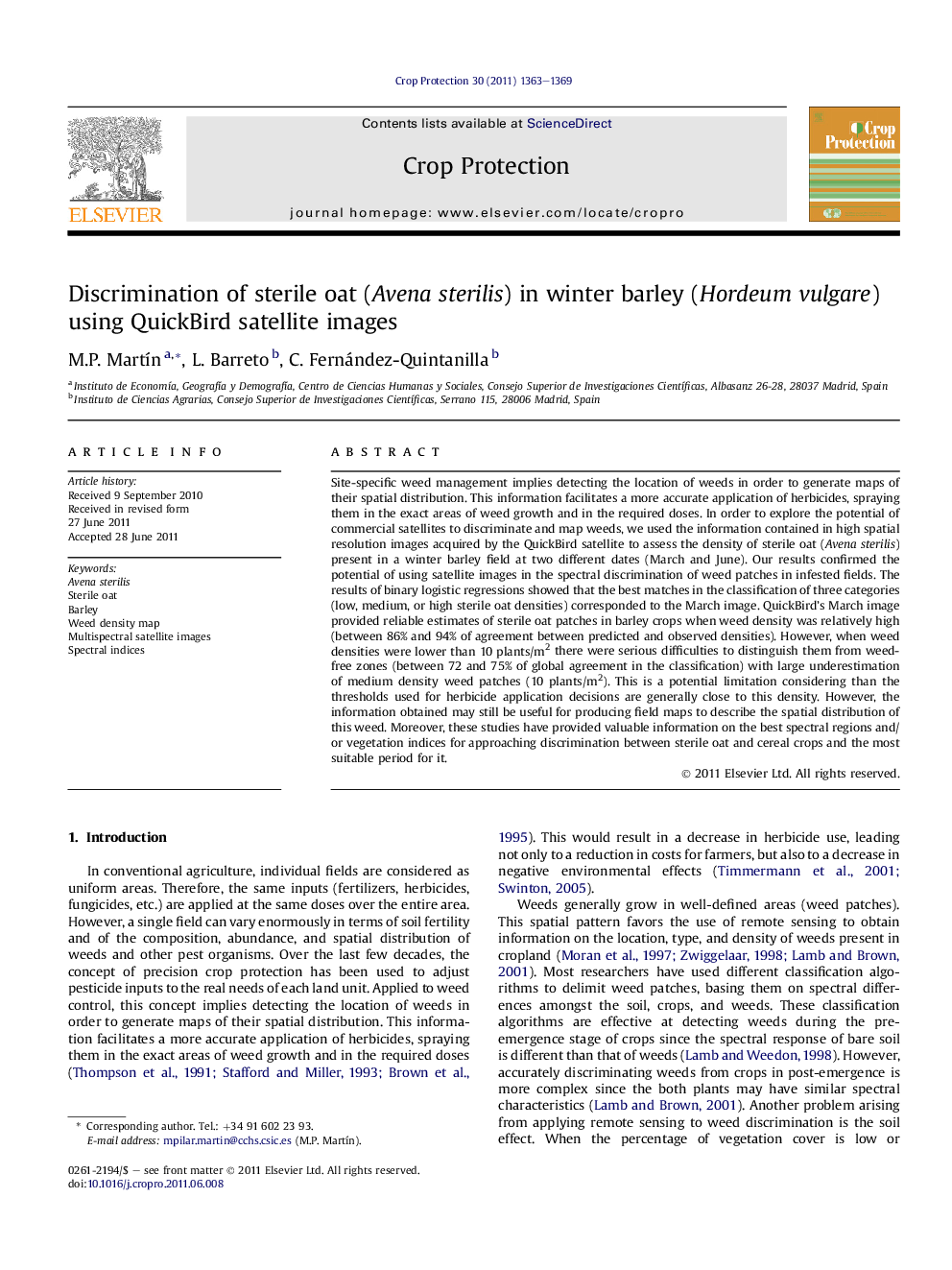| کد مقاله | کد نشریه | سال انتشار | مقاله انگلیسی | نسخه تمام متن |
|---|---|---|---|---|
| 4506578 | 1321320 | 2011 | 7 صفحه PDF | دانلود رایگان |

Site-specific weed management implies detecting the location of weeds in order to generate maps of their spatial distribution. This information facilitates a more accurate application of herbicides, spraying them in the exact areas of weed growth and in the required doses. In order to explore the potential of commercial satellites to discriminate and map weeds, we used the information contained in high spatial resolution images acquired by the QuickBird satellite to assess the density of sterile oat (Avena sterilis) present in a winter barley field at two different dates (March and June). Our results confirmed the potential of using satellite images in the spectral discrimination of weed patches in infested fields. The results of binary logistic regressions showed that the best matches in the classification of three categories (low, medium, or high sterile oat densities) corresponded to the March image. QuickBird’s March image provided reliable estimates of sterile oat patches in barley crops when weed density was relatively high (between 86% and 94% of agreement between predicted and observed densities). However, when weed densities were lower than 10 plants/m2 there were serious difficulties to distinguish them from weed-free zones (between 72 and 75% of global agreement in the classification) with large underestimation of medium density weed patches (10 plants/m2). This is a potential limitation considering than the thresholds used for herbicide application decisions are generally close to this density. However, the information obtained may still be useful for producing field maps to describe the spatial distribution of this weed. Moreover, these studies have provided valuable information on the best spectral regions and/or vegetation indices for approaching discrimination between sterile oat and cereal crops and the most suitable period for it.
► QuickBird images provide reliable estimates of sterile oat patches in winter barley.
► Best discrimination when weed density was relatively high (100 plants/m2).
► Weed densities lower than 10 plants/m2 are difficult to distinguish.
► Highest discrimination ability was obtained with the March image.
► The information can be used to map the spatial distribution of this weed.
Journal: Crop Protection - Volume 30, Issue 10, October 2011, Pages 1363–1369